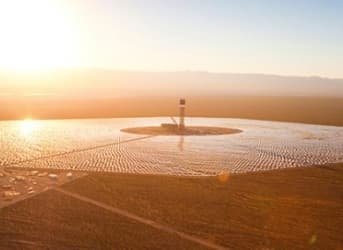California is not participating in the upcoming United Nations Climate Change Conference (UNFCCC) – at least not independently – but that won’t stop the state from setting an example. On April 29, California Governor Jerry Brown issued an executive order to establish a statewide greenhouse gas (GHG) reduction target of 40 percent below 1990 levels by 2030. Governor Brown hasn’t exactly upped the ante, but he’s attempted to provide regulatory clarity and urgency as the state moves toward its 80 percent reduction target by 2050.
The medium-term objective matches a similar goal set by the European Union last October, but west of the Atlantic, California stands alone in its ambition.
Ranked globally, California has the world’s eighth largest economy and is a top-20 GHG emitter. Overall, the state is responsible for about one percent of the world’s annual CO2 emissions. In the next 15 years, California’s population is expected to increase 14 percent. Related: How Much Longer Can The Oil Age Last?
To date, the state’s efforts have been relatively successful. Non-hydro renewable electricity generation now accounts for more than 20 percent of the state’s needs. Since 2007, total CO2 emissions have fallen more than 12 percent – bolstered by a 17 percent decline in the transportation sector. Still, improvements in the commercial, industrial, and residential sectors have been less than spectacular. Moreover, recent progress in the electric power sector has taken a step backward as nuclear (the closure of the San Onofre power plant) and hydro (drought) generation have dropped approximately 50 and 40 percent respectively since 2011.
Back in January, during his most recent inaugural address, Governor Brown announced plans to increase renewable electric generation to 50 percent; reduce petroleum use in cars and trucks by up to 50 percent; and double the energy savings from existing buildings – all by 2030.
However , according to a new study by electric consultancy E3, the state will need that, and likely more, to achieve its climate goals. Related: A Spanner In The Works Of The Solar Revolution
To realize GHG emission reductions of even 26-38 percent by 2030 – still shy of Brown’s latest target of 40 percent – E3 suggests the following rapid low-carbon economy transition: 50-60 percent of electricity sales are supplied from renewable sources; 50 percent of natural gas demand is met with biogas; 6-7 million zero-emission and plug-in-hybrid vehicles on the road (California recently passed the 100,000 mark); an increase in the use of biofuels to four billion gallons of renewable diesel and gasoline; a doubling of residential and industrial energy efficiency; and a significant reduction in methane and F-gases.
To reach the 40 percent target, technology commercialization and deployment – and lifestyle changes for that matter – will simply have to occur faster. Whether California has the policies in place to make this change occur is unclear. Related: India Could Be The Next Solar Investment Hotspot
The good news is the fix is relatively cheap. Assuming GHG reductions of 33 percent, E3 estimates the direct cost to the average household to be $8 per month. A larger electric bill, car payments, and vehicle electricity or other zero-emission fuel charges offset annual savings in gasoline/diesel and natural gas costs. If commercial and industrial costs are passed on to the consumer, the household cost impact jumps to $14 per month.
Taking it a step further, Stanford’s Mark Jacobson believes California can replace 80-85 percent of its existing conventional energy generation with renewable sources by 2030, and virtually eliminate its GHG emissions by 2050. Jacobson estimates the cost of such an undertaking to be $1.1 trillion. Though, factoring in air pollution health costs, jobs growth, and other climate externalities, the recovery period is a speedy seven years.
Ambitious? Yes. Possible? Definitely. Probable? Perhaps too soon to say. The state’s ongoing drought and rapid population growth present more than a handful of challenges. Improvements across all sectors will have to move at a pace heretofore unseen. With that said, there’s certainly no harm in trying.
ADVERTISEMENT
By Colin Chilcoat of Oilprice.com
More Top Reads From Oilprice.com:
- Germany’s Nuclear Cutback Is Darkening European Skies
- 5 Solar Stocks That Should Be On Your Radar
- How Much Would Zero Emissions Cost?



















"No harm in trying"???
The costs in human misery, infringement of liberty AND dollars are extraordinary. All this while our pollution sensors detect more and more particulate pollution blowing over from Chinese coal plants.
No doubt the doyens who run Sacramento will devise new punishments for the people of California.
For those who have "made it" California is still a beautiful place. But please drop the pretense about the kinds of opportunity our grandparents enjoyed. That opportunity was based on respect for the rule of law and an understanding of the proper role of government.
It's fine to have lofty goals, but at what cost and consequences?
With low oil prices Californians should be enjoying lower gas prices, but compaired to most of the other 49, not even close
If the states goal is to get everyone out of gas vehicles and into electrics, where will the electricy to charge the batteries come from? Oh thats right, Cole fired power plants in other states like Idaho, Wyoming and Montana.
I don't oppose green energy or the reduction of GHG emissions, I just think that an agressive go it alone approach based on idealism thats porely thought out, like the crazy train, are self destructive at best.